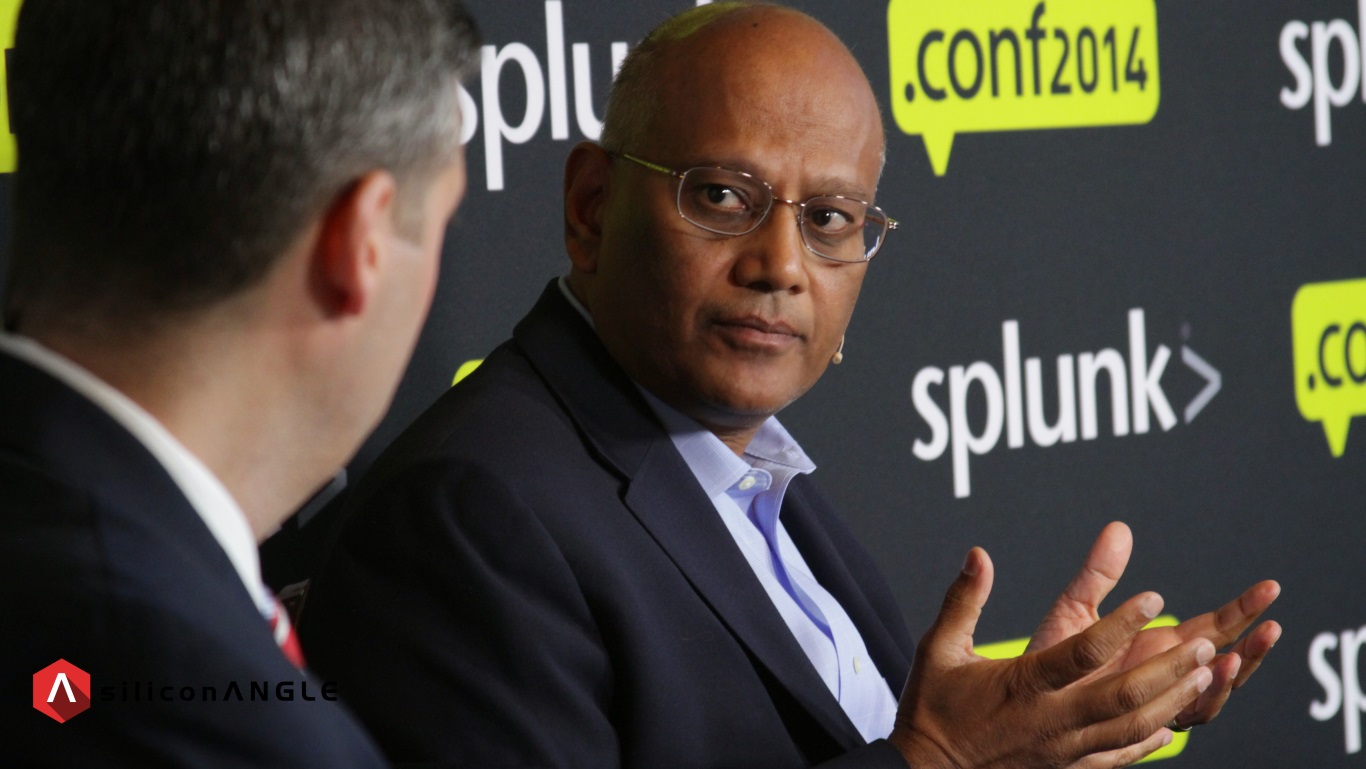 NEWS
NEWS
 NEWS
NEWS
 NEWS
NEWS
Cisco VP of Advanced Services Sanjay Pol In theCUBE During Splunk.conf 2014
Today’s web is mostly the domain of people, but the Internet of Things is about to change all that, according to Cisco vice president of advanced services Sanjay Pol.
Speaking on SiliconANGLE’s theCUBE at the recently concluded Splunk Worldwide Users Conference, Pol predicted that tomorrow’s Internet of Things will be as much about the devices as the individuals using them.
“This new Internet will be a combination of people and all the devices that are going to connect” to the grid, Pol told hosts Jeff Frick and Jeff Kelly, defining a term he called pervasive” connectivity.
To tap into the wealth of new information set to become available with the Internet of Things, Cisco is pushing a model called “fog computing” that replicates analytic capabilities traditionally confined to the so-called edge of the network. “The notion is analysis that can be done closer to where the action is happening so I can quickly react to it,” Pol explained.
In an era in which every component of an organization’s vast chain has an IP address, the ability to react hours or even minutes faster to a change is a competitive edge, Pol said. For example, catching anomalous activity at the source can make the difference between a close call and a privacy disaster. Enabling local decision-making also has the potential to drive direct business value, Pol continued, using the example of a futuristic wind farm in which an individual turbine can automatically tune operational parameters in real-time based on weather changes at its particular location and altitude. That use case might also include an analytical element that sheds light on opportunities to improve the performance of the farm as a whole.
Reconciling fog” components presents a unique architectural challenge that Pol sees being solved, in this scenario at least, through a high-level management layer coordinating the two elements. That hub would also double as a contact point between the wind farm and any system that it might interact with, from the power grid to the distribution points.
“Today, it’s more evolutionary steps: it’s more ‘I can connect to the engine, I can get feedback from the engine, I can connect to a wind turbine, I can get feedback from the turbine’. As we go forward, you will see the opportunity to create these systems that will act as an organism,” where the different “organs” mutually influence one another, Pol predicted.
Managing that digital ecosystem will prove a colossal challenge, but CIOs will also have to contend with ensuring reliability and security of every single connected piece in the puzzle. Cisco is adjusting its product development strategy accordingly, Pol highlighted. “The way we architect these networks in that instance is making sure there are several redundant paths between these components, so that if one or two were to fail, I can still make that connection,” he detailed.” It’s absolutely paramount we never break down in this chain of communications.”
On the security side, the company is turning to partners such as Splunk Inc. for help with managing security events on customer networks. Pol said that Cisco has seen so much success with with that firm’s log processing software in its internal IT environment that it’s now actively considering whether to package the platform into commercial solutions . The technology has proven itself a powerful tool for aggregating machine-generated data, but he believes that the true value of Splunk lies in the next phase of the analytics lifecycle.
“I think Splunk has tremendous prospects if it starts to execute on this vision of taking its base of data and over timing building upon it while providing the capabilities to analyze the information in a simple manner without having to learn a complicated query language,” he said. The software maker moved a big step closer to realizing that vision at the conference with the introducion of new capabilities designed to streamline the aggregation and analysis of machine-generated data.
Watch the full interview (22:26)
THANK YOU